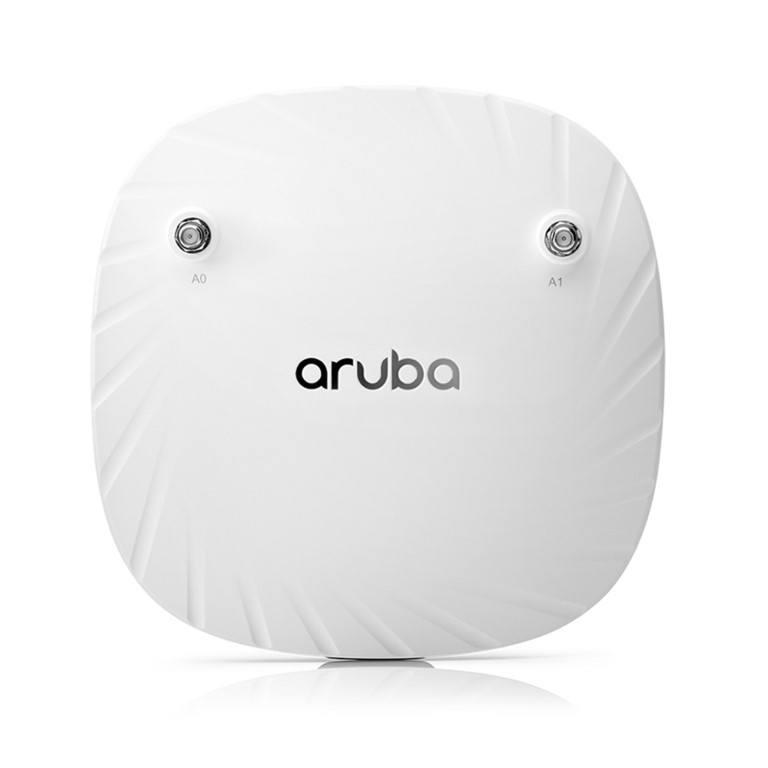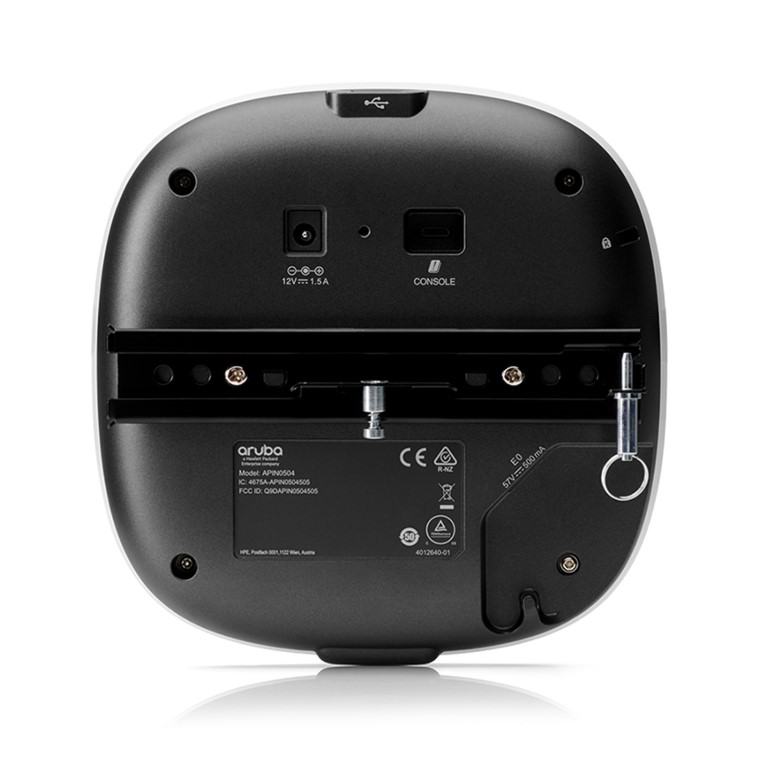HPE Aruba AP-504 Dual Radio 2x2 MIMO Wi-Fi 6 External Antennas Unified Campus Access Point R2H22A
HPE Aruba AP-504 Dual Radio 2x2 MIMO Wi-Fi 6 External Antennas Unified Campus Access Point R2H22A is backordered and will ship as soon as it is back in stock.
Delivery and Shipping
Delivery and Shipping
* Next Business Day Shipping Available - Learn more
Easy Returns
Easy Returns
Buy With Confidence. 14 Day Returns. Online. Learn More
Price Match Guarantee
Price Match Guarantee
Found a Better Price? We'll Match It - Guaranteed - Learn More
Description
Description
HPE Aruba AP-504 Dual Radio 2x2 MIMO Wi-Fi 6 External Antennas Unified Campus Access Point R2H22A
These affordable Wi-Fi 6 access points provide high-performance connectivity for any organization experiencing growing numbers of mobile, IoT and mobility requirements. With a maximum real-world aggregate data rate of 1.49 Gbps (HE80/HE20), they deliver the speed and reliability needed for venues and workplaces such as schools, midsize offices and retailers.
Incredible efficiency
The HPE Aruba Networking 500 Series APs are also designed to optimize user experience by maximizing Wi-Fi efficiency and dramatically reducing airtime contention between clients. Features include Orthogonal frequency-division multiple access (OFDMA), and cellular optimization. With up to 2 spatial streams (2SS) and 80 MHz channel bandwidth (HE80), the 500 Series provides groundbreaking wireless capabilities for budget-conscious deployments.
Advantages of OFDMA
This capability allows Aruba’s APs to handle multiple Wi-Fi 6 capable clients on each channel simultaneously, regardless of device or traffic type. Channel utilization is optimized by handling each transaction via smaller sub-carriers or resource units (RUs), which means that clients are sharing a channel and not competing for airtime and bandwidth.
HPE Aruba Networking Air Slice for extended application assurance
Initially, APs in controller-less mode (Instant) can provide SLA-grade performance by allocating radio resources, such as time, frequency, and spatial streams, to specific traffic types. By combining Aruba’s Policy Enforcement Firewall (PEF) and Layer 7 deep packet inspection (DPI) to identify user roles and applications, the APs will dynamically allocate the bandwidth needed. Non-Wi-Fi 6 clients can also benefit. Air Slice for APs uses HPE Aruba Networking Central for management. Controller-based APs will be supported in a future software release.
Wi-Fi 6 aware client optimization
Aruba’s patented AI-powered ClientMatch technology eliminates sticky client issues by placing Wi-Fi 6 capable devices on the best available AP. Session metrics are used to steer mobile devices to the best AP based on available bandwidth, types of applications being used and traffic type—even as users roam.
HPE Aruba Networking Advanced Cellular Coexistence (ACC)
This feature uses built-in filtering to automatically minimize the impact of interference from cellular networks, distributed antenna systems (DAS), and commercial small cell or femtocell equipment.
Intelligent Power Monitoring (IPM)
HPE Aruba Networking APs continuously monitor and report hardware energy consumption. They can also be configured to enable or disable capabilities based on available PoE power—ideal when wired switches have exhausted their power budget.
IoT platform capabilities
Like all HPE Aruba Networking Wi-Fi 6 APs, the 500 Series includes an integrated Bluetooth 5 and 802.15.4 radio (for Zigbee support) to simplify deploying and managing IoT-based location services, asset tracking services, security solutions and IoT sensors. This allows organizations to leverage the 500 Series as an IoT platform, which eliminates the need for an overlay infrastructure and additional IT resources.
Target Wake Time (TWT)
Ideal for IoTs that communicate infrequently, TWT establishes a schedule for when clients need to communicate with an AP. This helps improve client power savings and reduces airtime contention with other clients.
HPE Aruba Networking Secure Infrastructure
The HPE Aruba Networking 500 Series includes components of HPE Aruba Networking’s 360 Secure Fabric to help protect user authentication and wireless traffic.
Technical Specification
-
802.11b: Direct-sequence spread-spectrum (DSSS)
-
802.11a/g/n/ac: Orthogonal frequency-division multiplexing (OFDM)
-
802.11ax: Orthogonal frequency-division multiple access (OFDMA) with up to 8 resource units
-
802.11b: BPSK, QPSK, CCK
-
802.11a/g/n: BPSK, QPSK, 16-QAM, 64-QAM, 256-QAM (proprietary extension)
-
802.11ac: BPSK, QPSK, 16-QAM, 64-QAM, 256-QAM, 1024-QAM (proprietary extension)
-
802.11ax: BPSK, QPSK, 16-QAM, 64-QAM, 256-QAM, 1024-QAM
-
Two (female) RP-SMA connectors for external dual band antennas (A0 and A1, corresponding with radio chains 0 and 1). Worst-case internal loss between radio interface and external antenna connectors (due to diplexing circuitry): 0.7dB in 2.4 GHz and 1.3 dB in 5 GHz.
-
Auto-sensing link speed (10/100/1000BASE-T) and MDI/MDX
-
PoE-PD: 48Vdc (nominal) 802.3af/at PoE (class 3 or 4)
-
802.3az Energy Efficient Ethernet (EEE)
-
BLE: up to 7 dBm transmit power (class 1) and -93 dBm receive sensitivity (1 Mbps)
-
Zigbee: up to 6 dBm transmit power and -96 dBm receive sensitivity Integrated vertically polarized omnidirectional antenna with roughly 30 degrees downtilt and peak gain of 3.3 dBi
-
The AP supports direct DC power and Power over Ethernet
-
When both DC and PoE power sources are available, DC power takes priority over PoE
-
Power sources are sold separately; see the 500 Series Ordering Guide for details
-
When powered by DC or 802.3at (class 4) PoE, the AP will operate without restrictions.
-
When powered by 802.3af (class 3) PoE and with the IPM feature disabled, the AP will disable the USB port. In the same configuration but with IPM enabled, the AP will start up in unrestricted mode, but may dynamically apply restrictions depending on the PoE budget and actual power. The feature restrictions and order can be programmed.
Payment & Security
Payment methods
Your payment information is processed securely. We do not store credit card details nor have access to your credit card information.




